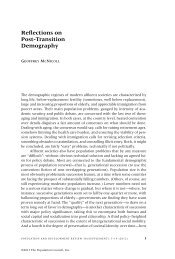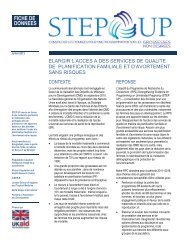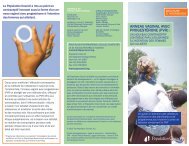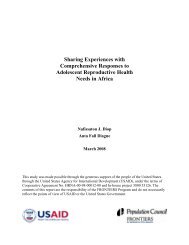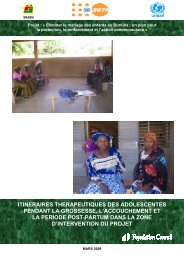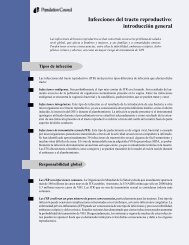Community Health Volunteer's Training Manual - Population Council
Community Health Volunteer's Training Manual - Population Council
Community Health Volunteer's Training Manual - Population Council
Create successful ePaper yourself
Turn your PDF publications into a flip-book with our unique Google optimized e-Paper software.
Topic 4 Conducting a baseline survey<br />
DrerooplnatMtCoeelnlcyt Pofor<br />
A baseline survey is done to establish the initial conditions existing at the start of a project.<br />
It provides general information about the community which can be used to design projects.<br />
Also, it is used to assess the effectiveness of the project by comparing the situation at the end<br />
of the project with the situation at the beginning.<br />
As far as your work as volunteers is concerned, a baseline survey is the first assessment of<br />
the current health status and other health related issues at the start of a project. It includes<br />
collecting data on the population of the community (men, women, and children), the<br />
community sources of health care, health facilities, and health staff.<br />
Procedures for conducting a baseline survey<br />
To ensure that you have useful information from the baseline survey, you have to follow<br />
established procedure. In conducting a survey, some of the steps to follow are:<br />
Set the goals: The goals of the survey must be clear so that the results can be used to solve<br />
the specific problem. State specifically what you want to achieve.<br />
Sampling: Decide on the target population and the sample size. These are the people<br />
you will ask the questions. Sampling is the process of selecting a part of the population/<br />
community which has similar characteristics to the entire population/community.<br />
Development of instruments: Determines the questions you will ask and the suitable<br />
survey methods to be used in gathering the data.<br />
Pre-testing: Test the questions on a similar population to the sample/ target population.<br />
This enables the researcher determine clarity of the questions. The questions are revised<br />
where necessary and the instruments finalised.<br />
Data collection: Using some of the methods above, you collect various forms of<br />
information from different people in the community who form your target groups.<br />
Analyse the data collected: Analysis of the data is done and a survey report written.<br />
Dissemination of findings: The stakeholders either receive copies of the survey reports<br />
or they are called to a meeting and the findings of the survey are presented to them. The<br />
report is then finalised and copies distributed to all stakeholders and other individuals or<br />
institutions concerned.<br />
Methods of conducting a baseline survey<br />
There are many methods for conducting a baseline survey, but the method selected depends<br />
on the goal of the survey. Some of the methods you can use as volunteers are interviews,<br />
use of questionnaires, and focus group discussions. However, to improve the overall<br />
97



